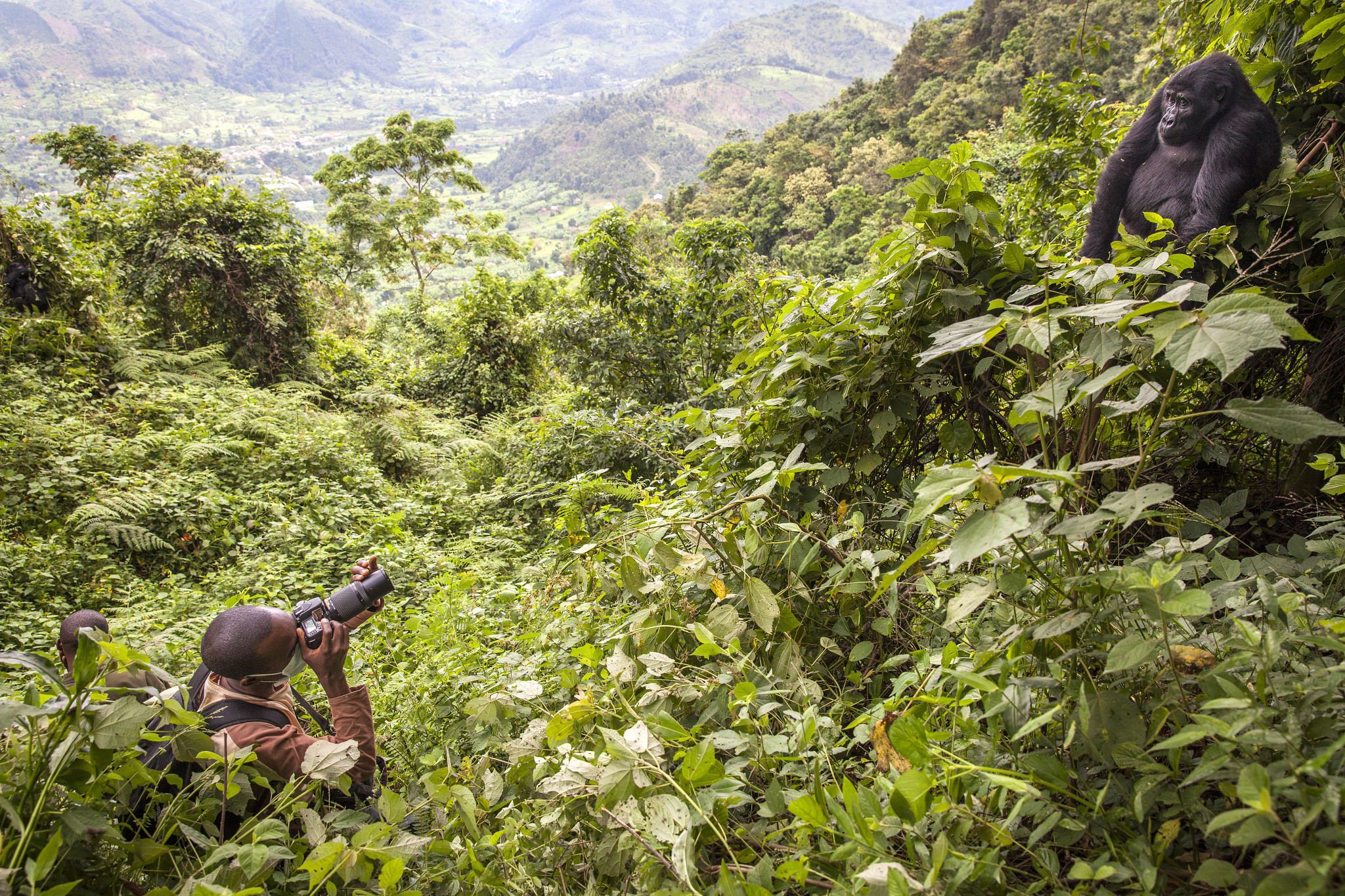Monitoring & Interventions
The foundation of Gorilla Doctors work is gorilla health monitoring—visually observing
the members of gorilla groups on a regular basis to check for signs of illness or injury.
Gorilla Doctors is only able to monitor and treat gorillas in habituated groups—groups that have grown accustomed to the presence of humans. Luckily for our veterinary team, most of our patients are easy to find and comfortable being observed at close range.
Routine Health Check
Parameters
The team visits every habituated mountain gorilla group every month to perform a thorough visual health check. During a routine health check, the veterinarian observes each member of the gorilla group in order to check a variety of health parameters:
Body condition: Does the animal look well fed and healthy?
Activity: Is the animal alert? Does it show any signs of weakness or lethargy?
Respiration: Is the animal breathing well? Is it coughing or sneezing?
Skin and Hair: Does the animal have any visible wounds, skin lesions, or unusual growths? Is the haircoat lustrous and full, or dull, discolored, or falling out?
Head/Face Discharge: Does the animal have any visible signs of illness on it’s head or face, such as a runny nose or eye discharge?
Stool: Does the animal’s stool appear normal?
Careful notes are taken for each animal. In addition to the veterinarians’ monthly checks, Gorilla Doctors relies heavily on the observations of the trackers working for the national parks and organizations like the Karisoke Research Center of the Dian Fossey Gorilla Fund International. The trackers see the gorillas every day and are trained by Gorilla Doctors to look for any behavioral changes and other signs that could indicate illness and injury. Concerns are reported back to our veterinary team which follows up to perform more in-depth visual health checks.
IMPACT
To keep track of the health histories of the different gorillas, the veterinary team records their health check data in a system called IMPACT (Internet Management Program to Assist Conservation Technologies). Working in close partnership with Gorilla Doctors, IMPACT 2.0 was created by Medical Decision Logic, Inc. (“mdlogix”) in 2011. The system used mdlogix’s Health Science Process Framework (“HSPF”), an advanced web technology platform that supports scientific processes, data specifications, and team structure and workflows. HSPF has historically been used to address needs in biomedical research, clinical care, public health and education.
In Africa, trackers record their daily observations in IMPACT 2.0, rather than simply reporting to Gorilla Doctors when a problem is noted. By keeping a highly organized record that includes information on location and gorilla group membership over time, a unique data resource is being created (with over 23,000 observations as of June 2015) that will provide Gorilla Doctors and other researchers with a much more in-depth understanding of the health trends in the population as well as a clearer picture of the overall health of individual gorillas.
When a gorilla is found to be suffering from a human-induced or life-threatening injury or illness, the veterinary team, in collaboration with national park authorities, makes plans to medically intervene in order to save the animal. The main health issues that lead to full veterinary interventions are severe respiratory disease outbreaks, ensnarement in ropes set by poachers, human-gorilla conflict, and major trauma inflicted by other gorillas.

Uganda Field Veterinarian Dr. Fred Nizeyimana conducts a routine health check in Bwindi Impenetrable National Park.


 Donate
Donate